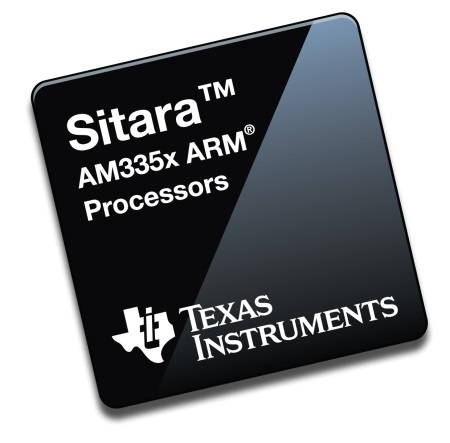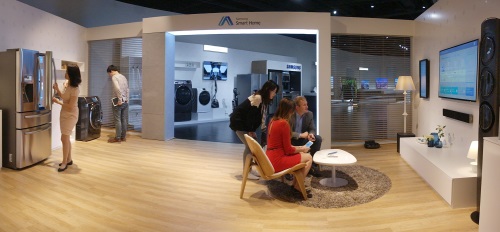Building automation is a rapidly growing field that includes everything that goes into the finished building especially the electric grid, water, HVAC, windows, and lighting as well as the sensors, and Internet IP addressing of devices.
Research companies say that smart windows, energy harvesters, wireless sensors, and the Internet of Things (IoT) are adding to the concept of smart buildings. They will include smart windows that typically mean self-tinting windows (like your eyeglasses), but could also mean self-healing and self-cleaning windows. For more information http://nanomarkets.net/market_reports/report/smart-windows-markets-2014-2021 .
The development of solid-state lighting (SSL) opens the possibilities of integrating sensors, controls, connectivity, and communications into luminaires. As individual luminaires become smarter, the opportunity to integrate them into cost-effective smart buildings, automobiles, and other applications emerges as a profitable business opportunity. Commercial real estate offers one of the largest market opportunities for smart lighting.
According to a recent report from Navigant Research, the building automation and controls industry will be fundamentally transformed by digital technologies in the coming years. The increasing focus by building owners, operators, and regulatory agencies on optimizing commercial building energy use has put a spotlight on building automation systems (BAS), especially those for HVAC and lighting control, according to the report. In particular, the revolution in energy-efficient lighting, as the industry moves toward greater adoption of light-emitting diode (LED) technology, is opening new opportunities for advanced networked lighting controls. The report, Commercial Building Automation Systems, analyzes the global market for commercial BAS for HVAC, lighting, fire and life safety, and security & access controls, as well as integrated building management systems.
Punya Prakash, Worldwide Business Manager for Texas Instruments, observed that BAS are deployed across all levels ranging from small building segments to larger building establishments. With well-established BAS competent energy management can be achieved through building-to-building communications instead of only building-to-grid communication. BAS developers continue to explore a scalable, cost-competitive solution that supports standardized open communication protocols. Flexible BMS tailored for easy deployment and user-friendly configuration significantly contribute towards affordable operational costs.
The next few years will focus on leveraging the smart grid deployments with smart building controllers for enhanced energy infrastructure. With a strong energy management foundation, over a longer term, highly interconnected wired and wireless applications will be easily realizable. Today, commercial buildings contribute up to 40% of energy consumption in the U.S. With energy costs rising, grid-hardened green buildings that also offer superior occupant safety and lifestyle convenience are a compelling proposition to the future building solutions.
Radha Nayak, Senior Director, Product Management at Soraa, says that the momentum behind LED technology advancements has steadily increased since the introduction of GaN-based blue- and white-emitting LEDs in the 1990s. This has ushered in an era of new lighting products with unprecedented luminous efficacy and the potential for substantial savings in worldwide electricity consumption. However, the very high up-front cost of LED lighting products has limited the adoption rate and threatens to reduce and/or delay the promise of energy savings with LED lighting in homes and buildings. Primary reasons for the high cost are the performance limitations and complicated semiconductor processing operations inherent to the utilization of foreign substrates (silicon, silicon carbide, and sapphire) as the materials platforms for most of today’s GaN-based LEDs. In contrast, recent advancements in GaN substrate technology have provided an opportunity for a product platform based on the native substrate. This technology platform, GaN-on-GaN, opens the path to new operating regimes and simplified LED architectures that enable unprecedented performance and revolutionary lighting product designs.
Sitara AM335x ARM processor

The AM335x consists of six different devices with various options including speed grades, packages, graphics, and peripherals. There are low-cost and full featured development platforms to enable developers to explore the full functionality of the AM335x processor. www.ti.com

Demonstrated at Samsung’s new Innovation Museum in Korea, Samsung Smart Home, a unique home solution service that was launched in early April, digitally connects various home appliances, including refrigerator, washer, air conditioner, oven, and robot vacuum cleaner, as well as lighting, to smart TVs, smartphones, and Samsung gear. www.ssi.samsung.com

Removing barriers to the widespread adoption of LED lighting, Soraa’s full-visible-spectrum SORAA VIVID 2 LED MR16 lamp is the first ultra-efficient replacement for 65-W halogen lamps. A technological breakthrough made possible by Soraa’s world-record performance GaN-on-GaN LEDs, the new SORAA LED MR16 lamps deliver the industry’s highest light output, while rendering vivid colors, richer reds and whiter whites. www.soraa.com
Advertisement





